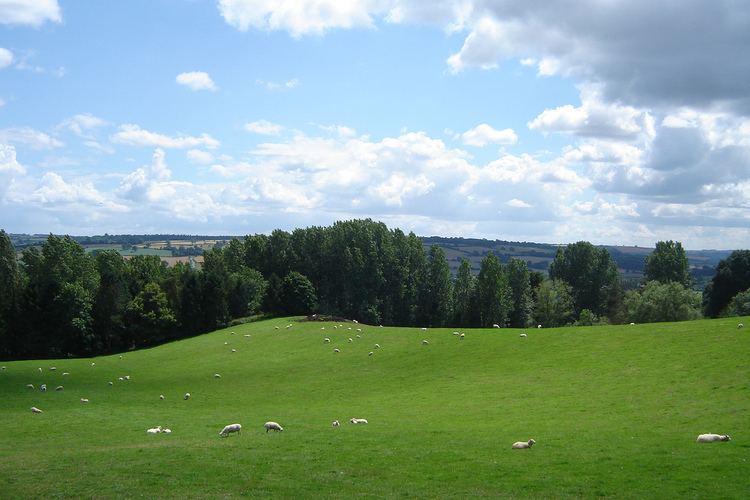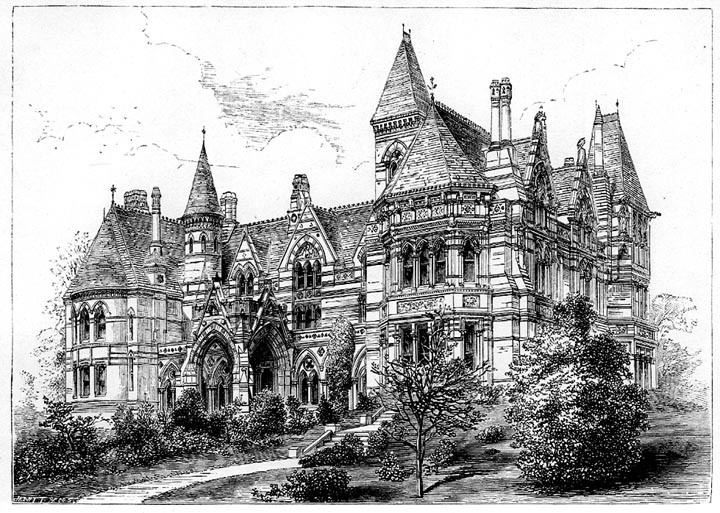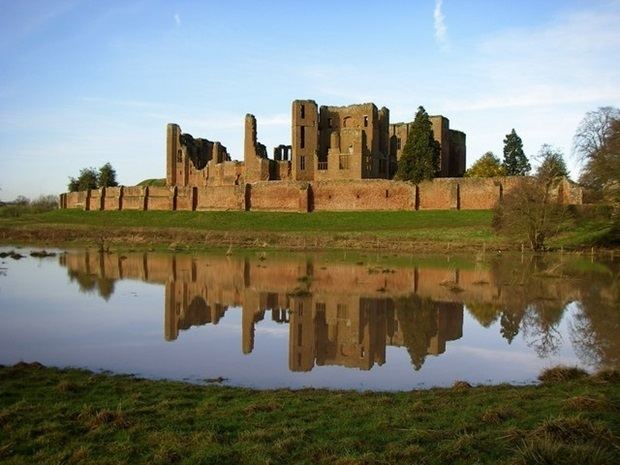Area 1,975 km² Founded Historic | Region | |
 | ||
Destinations Points of interest Warwick Castle, Charlecote Park, Lord Leycester Hospital, Collegiate Church of St Mary - Warwick, St Nicholas Park - Warwick | ||
Map of Warwickshire
Warwickshire ( or ) (abbreviated Warks) is a landlocked county in the West Midlands of England. The county town is Warwick, although the largest town is Nuneaton. The county is famous for being the birthplace of William Shakespeare.
Contents
- Map of Warwickshire
- Warwickshire
- Warwickshire libraries self service machine
- Geography
- Arden and Felden
- Historic boundaries
- Settlements
- History
- Boundary changes
- Economy
- Local government
- County council
- Education
- Roads
- Rail
- Honeybourne Line
- Air
- Canals and waterways
- Association football
- Cricket
- Gaelic sports
- Hockey
- Polo
- Freedom of county
- People
- References

The county is divided into five districts of North Warwickshire, Nuneaton and Bedworth, Rugby, Warwick and Stratford-on-Avon. The current county boundaries were set in 1974 by the Local Government Act 1972. The historic county boundaries also included Coventry and Solihull, as well as much of Birmingham.

Warwickshire
Warwickshire libraries self service machine
Geography
The county is bordered by Leicestershire to the northeast, Staffordshire to the northwest, Worcestershire and the West Midlands to the west, Northamptonshire to the east and southeast, Gloucestershire to the southwest and Oxfordshire to the south. The northern tip of the county is only 3 miles (5 km) from the Derbyshire border. An average-sized English county covering an area of almost 2,000 km2, it runs some 60 miles (97 km) north to south. Equivalently it extends as far north as Shrewsbury in Shropshire and as far south as Banbury in north Oxfordshire.
The majority of Warwickshire's population live in the north and centre of the county. The market towns of northern and eastern Warwickshire were industrialised in the 19th century, and include Atherstone, Bedworth, Nuneaton, and Rugby. Of these, Atherstone has retained most of its original character. Major industries included coal mining, textiles, engineering and cement production, but heavy industry is in decline, being replaced by distribution centres, light to medium industry and services. Of the northern and eastern towns, only Nuneaton and Rugby (as the birthplace of rugby football) are well-known outside of Warwickshire. The prosperous towns of central and western Warwickshire including Royal Leamington Spa, Warwick, Stratford-upon-Avon, Kenilworth, Alcester and Wellesbourne harbour light to medium industries, services and tourism as major employment sectors.
The north of the county, bordering Staffordshire and Leicestershire, is mildly undulating countryside and the northernmost village, No Man's Heath, is only 34 miles (55 km) south of the Peak District National Park's southernmost point.
The south of the county is largely rural and sparsely populated, and includes a small area of the Cotswolds, at the border with northwest Gloucestershire. The only town in the south of Warwickshire is Shipston-on-Stour. The highest point in the county, at 261 m (856 ft), is Ebrington Hill, again on the border with Gloucestershire, grid reference SP187426 at the county's southwest extremity.
There are no cities in Warwickshire since both Coventry and Birmingham were incorporated into the West Midlands county in 1974 and are now metropolitan authorities in themselves. The largest towns in Warwickshire in 2011 were: Nuneaton (pop. 81,900), Rugby (70,600), Leamington Spa (49,500), Bedworth (32,500), Warwick (30,100), Stratford (25,500) and Kenilworth (22,400).
Arden and Felden
Much of western Warwickshire, including that area now forming part of Coventry, Solihull and Birmingham, was covered by the ancient Forest of Arden (most of which was cut down to provide fuel for industrialisation). Thus the names of a number of places in the central-western part of Warwickshire end with the phrase "-in-Arden", such as Henley-in-Arden, Hampton-in-Arden and Tanworth-in-Arden. The remaining area, not part of the forest, was called the Felden – from fielden.
Historic boundaries
Areas historically part of Warwickshire include Coventry, Solihull, Sutton Coldfield, Erdington, and some of Birmingham including Aston and Edgbaston. These became part of the metropolitan county of West Midlands (and Sutton Coldfield became part of Birmingham) following local government re-organisation in 1974.
In 1986 the West Midlands County Council was abolished and Birmingham, Coventry, and Solihull became effective unitary authorities, however the West Midlands county name has not been altogether abolished, and still exists for ceremonial purposes, and so the town and two cities remain outside Warwickshire.
Some organisations, such as Warwickshire County Cricket Club, which is based in Edgbaston, in Birmingham, still observe the historic county boundaries.
Coventry is effectively in the centre of the Warwickshire area, and still has strong ties with the county. Coventry and Warwickshire are sometimes treated as a single area and share a single Chamber of Commerce and BBC Local Radio Station (BBC Coventry & Warwickshire).
Coventry has been a part of Warwickshire for only some of its history. In 1451 Coventry was separated from Warwickshire and made a county corporate in its own right, called the County of the City of Coventry. In 1842 the county of Coventry was abolished and Coventry was remerged with Warwickshire. In recent times, there have been calls to formally re-introduce Coventry into Warwickshire, although nothing has yet come of this. The county's population would increase by almost a third-of-a-million overnight should this occur, Coventry being the UK's 11th largest city.
The town of Tamworth was historically divided between Warwickshire and Staffordshire, but since 1888 has been fully in Staffordshire.
In 1931, Warwickshire gained the town of Shipston-on-Stour from Worcestershire and several villages, including Long Marston and Welford-on-Avon, from Gloucestershire.
Settlements
The following towns and villages in Warwickshire have populations of over 5,000.
History
Warwickshire came into being as a division of the kingdom of Mercia in the early 11th century. The first reference to Warwickshire was in 1001, as Wæringscīr named after Warwick (meaning "dwellings by the weir").
During the Middle Ages Warwickshire was dominated by Coventry, which was at the time one of the most important cities in England due to its textiles trade in the heart of England. Warwickshire played a key part in the English Civil War, with the Battle of Edgehill and other skirmishes taking place in the county. During the Industrial Revolution Warwickshire became one of Britain's foremost industrial counties, with the large industrial cities of Birmingham and Coventry within its boundaries.
Boundary changes
Economy
This is a chart of trend of regional gross value added of Warwickshire at current basic prices published (pp. 240–253) by Office for National Statistics with figures in millions of British Pounds Sterling.
Video game developing company Codemasters is based in Warwickshire.
Local government
Like most English shire counties, Warwickshire has a two-tier structure of local government. Warwickshire is divided into five districts each with their own district councils. These districts are: North Warwickshire, Nuneaton and Bedworth, Rugby, Stratford, and Warwick (see map). The county and district councils are responsible for providing different services.
Atherstone is the headquarters of the North Warwickshire district, Nuneaton is headquarters of the Nuneaton and Bedworth District and Leamington Spa is the headquarters of the Warwick district.
In addition many small towns and villages have their own parish councils although these have only limited powers.
Warwickshire is policed by the Warwickshire Police. The force is governed by the elected Warwickshire Police and Crime Commissioner.
County council
The county also has a county council based in Warwick which is elected every four years. The last election was held on 4 May 2017 and resulted in conservative control, a change from the 2009 result where the Conservative Party controlled the county. The county council operates a cabinet-style council. The county council is made of 62 councillors, who decide upon the budget and appoints the council leader. The council leader selects 2 to 9 councillors and together they form the cabinet. The Leader assigns portfolios on which cabinet members make decisions. Key decisions are made by the whole cabinet while others are made only by the portfolio holders for relevant areas. In the 2017 local elections the Conservative Party took control of the Warwickshire County Council.
Education
In the state sector, children start school in the school year in which they turn five. They stay at primary school for seven years (although this varies even within the county, as some people have previously gone for four years and then spent another four years at a 'middle school') until they are eleven. Warwickshire is one of the few local authorities in England to still maintain the grammar school system in two districts: Stratford-on-Avon and Rugby, although Southam claims to have a comprehensive school. In the final year of primary school, children are given the opportunity of sitting the 11-plus exam to compete for a place at one of the grammar schools, with two in Stratford and Rugby and one in Alcester; these are: Stratford-upon-Avon Grammar School for Girls; King Edward VI School, a boys' school; Lawrence Sheriff Grammar School for Boys, in Rugby, as well as, Rugby High School for Girls and Alcester Grammar School (mixed). The exam is sat on three different days and consists of two verbal reasoning and mathematics papers and one extended writing paper. To maintain standards, there is a bank of papers that are used in rotation. In 2006, it was revealed in a local newspaper, the Stratford Herald, that some private 11-plus tutors had copies of the exam papers and that they were using them as practice papers for their pupils. This meant that, in some cases, pupils sitting the exam had seen the paper in advance.
Warwickshire contains four colleges of further education; North Warwickshire & Hinckley College which has main colleges based in Nuneaton and the Leicestershire town of Hinckley with smaller colleges based around North Warwickshire, King Edward VI Sixth Form College (K.E.G.S) in Nuneaton, Stratford-upon-Avon College and Warwickshire College, an institution made up of six main separate colleges that have merged (Leamington Centre, Rugby Centre, Moreton Morrell Centre, Pershore College, Henley-in-Arden Centre and the Trident Centre in Warwick).
There are also five independent schools within the county, namely: Rugby School, Warwick School, Princethorpe College, Kingsley School in Leamington Spa, and the King's High School For Girls, Warwick.
King Edward VI School, Stratford-upon-Avon still uses 13th century school buildings and is the likely school of William Shakespeare, Rugby School was founded in 1567 and Warwick School was founded c. 914 AD, which makes it the oldest surviving boys' school in the country. Rugby School is one of nine schools that were defined as the "great" English public schools by the Public Schools Act 1868, and is a member of the Rugby Group. Rugby School, Princethorpe College and Warwick School are HMC schools, with the Headmaster from each school attending the Headmasters' and Headmistresses' Conference.
In 2011, Warwickshire members of the union NUT supported action by staff at Coventry's Tile Hill Wood School, in opposition to the government's programme of Academies.
Roads
Several major motorways run through Warwickshire. These include:
Other major trunk routes in Warwickshire includes the A45 (Rugby-Coventry-Birmingham and east into Northamptonshire route). The A46 (connects the M40 to the M6 via Warwick, Kenilworth and Coventry), the A452 (Leamington to Birmingham route) and the A5 runs through Warwickshire passing Nuneaton between Tamworth and Hinckley (at Atherstone).
Rail
Two major railway lines pass through Warwickshire.
Other railway lines in Warwickshire include the Birmingham-Nuneaton section of the Birmingham to Peterborough Line, which continues east of Nuneaton towards Leicester and Peterborough. Nuneaton has direct services to Birmingham and Leicester on this line, and there are two intermediate stations at Water Orton and Coleshill in the extreme north-west of the county.
There is also a branch line from Birmingham to Stratford-upon-Avon. This line used to continue southwards to Cheltenham but is now a dead-end branch. There is an intermediate station on this line at Henley-in-Arden and at several small villages. Stratford also has direct rail services to London via the branch line to Warwick (mentioned earlier).
The only major town in Warwickshire not to have a station is Kenilworth. Although the Leamington to Coventry line passes through the town, its station was closed in the 1960s as part of the Beeching Axe. The station is now slated to re-open in December 2017, although currently there are no local services operating on the line, as it is used only by CrossCountry services.
Honeybourne Line
The Honeybourne Line is being reopened by the Gloucestershire and Warwickshire Railway connecting Cheltenham Racecourse to Broadway and Honeybourne on the Cotswold Line (which connects with Hereford, Worcester and Oxford, Reading and London Paddington). There is only a short gap to connect many places to Stratford upon Avon with Honeybourne by reopening the line into Warwickshire. There is a good business case to restore the Stratford-Cotswolds link line.
Air
Coventry Airport is located in the Warwickshire village of Baginton.
Canals and waterways
Canals in Warwickshire include:
The restored Saltisford Canal Arm is close to the centre of Warwick, and is now a short branch of the Grand Union Canal. The arm is the remains of the original terminus of the Warwick and Birmingham Canal and dates back to 1799. The Saltisford Canal Trust have restored most of the surviving canal, which is now the mooring for colourful narrowboats and a waterside park open to the public. Over 800 visiting narrowboats come by water to Warwick each year and moor on the arm.Saltisford Canal Trust
The River Avon is navigable from just north of Stratford. In 1974, the Higher Avon Navigation Trust made a proposal to extend the navigation to Warwick and Leamington, where a junction with the Grand Union Canal would create a new cruising ring. Warwickshire County Council believed the scheme to be a catalyst for economic regeneration in the area, but after gauging public support in 2003, decided not to support the plans. The Stratford and Warwick Waterway Trust is still actively pursuing the proposals.
Association football
Whilst Warwickshire does not have any professional football clubs it does still maintain a reasonable number of teams at the non-league level. As of the 2017-2018 season the highest ranking teams are Nuneaton Town and Leamington FC who play in the National League North, the sixth tier of English football. A level below in the Southern Football League Premier Division are Stratford Town. Other clubs include Rugby Town, Bedworth United, Southam United and Racing Club Warwick. All of these are affiliated to the Birmingham F.A.
Until the Local Government Act 1972, which dramatically reduced the size and population of the county, it boasted league sides Aston Villa, Birmingham City and Coventry City as well as strong non-league sides Solihull Borough and Sutton Coldfield Town.
Cricket
Warwickshire County Cricket Club play at Edgbaston, Birmingham (historically part of Warwickshire). Notable players for the side have been M.J.K. Smith, Rohan Kanhai, Brian Lara, Bob Willis, Allan Donald, Shaun Pollock, Dennis Amiss, Jonathan Trott and Ian Bell. In 2014 the club partly severed its links to the county by renaming its Twenty20 side the Birmingham Bears, much to the chagrin of many supporters.
Other grounds in modern-day Warwickshire which have hosted first-class cricket matches are:
Gaelic sports
The Warwickshire County Board of the Gaelic Athletic Association (GAA) (or Warwickshire GAA) is one of the county boards outside Ireland and is responsible for Gaelic games in Warwickshire. The county board is also responsible for the Warwickshire inter-county teams. They play their home games at Páirc na hÉireann. Warwickshire Schools GAA Board was originally set up in September 2000. It has grown at a very healthy rate such that by May 2007 WSGAA worked in partnership with 28 primary schools, 15 Secondary schools, 2 HE/FE Colleges and 5 local GAA clubs and in total an estimated 2385 young people. The aims of the WSGAA include competition by their elite team in the All-Ireland underage championships. This initiative is a remarkable departure from the traditional way in which British GAA clubs have been organised.
Hockey
Warwickshire has more clubs than any other county within the Midlands, and has good representation at all levels of the game, and within the Administrative and Officiating Worlds as well. Old Silhillians Hockey Club is the Home of Warwickshire hockey, with many fixtures being played on the site, as well as the County Club Minis being played, Junior Academy Centres being coached, and meetings/County Officials being based at the Silhillians Sports Ground. There are 3 clubs who include the word "Warwickshire" within their names: Olton & West Warwickshire, Coventry & North Warwickshire, and Rugby & East Warwickshire, though it is not certain where these claims to regional areas within the County came from. Warwickshire as a hockey County is recognised by the England Hockey Board as the region normally associated with Greater Warwickshire, since the West Midlands is not a hockey region within the EHB world, and hence includes Solihull and Coventry as well as the standard regions.
Polo
The Dallas Burston Polo Club is a six pitch polo club located near Southam. It also boasts a 3,000 seat conference centre and events venue.
Freedom of county
In March 2014 the freedom of the county was bestowed on the Royal Regiment of Fusiliers, the honour was officially bestowed following a parade through Warwick on 6 June 2014.
People
Warwickshire is perhaps best known for being the birthplace of William Shakespeare from Stratford-upon-Avon. Even today, road signs at the county boundary describe Warwickshire as "Shakespeare's County". The county has also produced other famous figures such as Aleister Crowley (from Royal Leamington Spa), George Eliot (from Nuneaton), Rupert Brooke (from Rugby), and Michael Drayton (from Hartshill). The poet Philip Larkin lived in Warwick (born in nearby Coventry), and Elizabeth Gaskell went to school in Barford and Stratford. Folk musician Nick Drake, who record for Island records in the late 60s, early 70s, lived and died in Tanworth-in-Arden.
